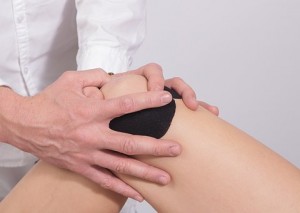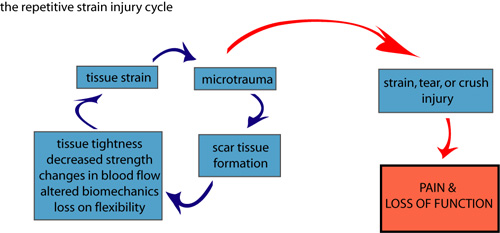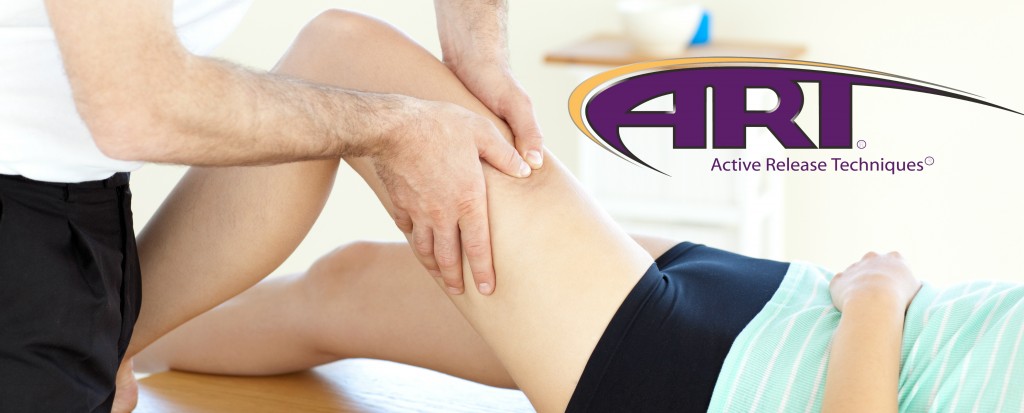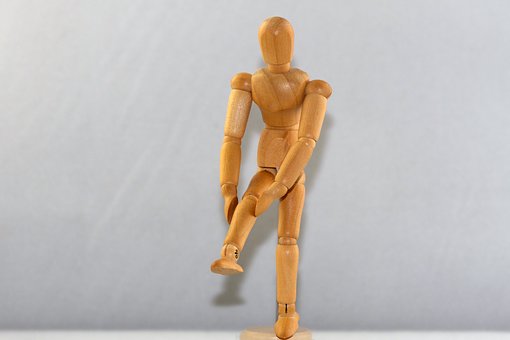Resolving Knee Injuries with Active Release Techniques
Knee problems can be among the most frustrating and debilitating injuries to occur across a wide range of sporting activities. Not only are knee injuries extremely common, but as the pain and symptoms associated with the injury develop the athlete`s ability to train and compete quickly diminishes. Making matters worse, many sports injuries involving the knee are slow to respond to traditional types of care, keeping the athlete sidelined for weeks or even months at a time. This often causes an athlete to miss a large part of their competitive season, or even worse, to be unable to participate in an event they have spent months preparing for.
Fortunately, a new treatment technique known as Active Release Techniques® (ART® ) is proving to be a very successful method to combat many common knee problems and get athletes back in the game quickly and effectively. But before we talk about why ART® works so effectively, first we need to understand how the knee becomes injured in the first place.
Understanding Knee Injuries
The knee joint is a type of hinge joint that allows the knee to bend forwards and backwards. For most athletic activities the knee is a critical region as it must act to both support the weight of the body, as well as flex and extend to generate the propulsive forces needed to move the body. To help with these tasks there is a complex set of muscles that surround the knee. It is essential that these muscles possess adequate strength, flexibility, and coordination as we rely on them to protect and stabilize the knee during virtually every athletic activity. For example, with sports such as basketball or soccer, the muscles of the knee must contract during running, jumping, or to initiate rapid changes in direction. Similar demands on the knee can be seen within a wide variety of sports such as hockey, football, baseball, racquet sports, and martial arts. These athletic motions require explosive muscle contractions at the knee, but also require finely tuned muscle balance and coordination to control the knee and prevent excessive strain during these movements. For the knee to stay healthy and to retain optimal function it is absolutely critical that there is adequate strength, flexibility, and coordination of the surrounding muscles. However, maintaining proper function at the knee in itself is not enough. In fact, for the knee to stay injury free, proper function is needed at the other regions of the leg and trunk as well.
For example, in addition to problems occurring of the knee muscles themselves, knee injury can also be linked to problems at the adjacent joints, such as the foot, hip, and pelvis. This is because the knee is directly connected to these structures through the tibia and femur, as well as through the surrounding muscles.
This interconnectedness is referred to as the kinetic chain. With this relationship we can think of the knee as one link in the kinetic chain, but each link can be affected by any of the other links. This can be a big problem for the knee because the adjacent foot and hip move differently than the knee. For example, both the hip and foot are designed to move in all 3 planes – front to back, side to side, and into rotation. The knee however, is designed to move primarily in only one plane – forward and backward. If even a minor problem such as excessive tightness, weakness, joint restriction, poor muscle balance, or faulty alignment exists in the hip or foot, it will often cause the knee to move excessively into a side-to-side or twisting direction. This abnormal knee motion will not only result in excessive stain and overload to the bone and ligament components of the knee joint, but will place even further contractile demand on the muscles that surround the knee in an attempt to protect the knee and correct the abnormal movement. This does not necessarily mean that these adjacent areas (i.e. foot or hip) will themselves be painful. In fact, the knee is often the site that will first develop pain, even if the knee is not the primary cause of the problem!
This situation where pain develops in one area as a result on a problem in another adjacent region is referred to as a “movement compensation.” Becaus e of the repetitive, high force motions associated with sports, even minor movement compensations will be greatly magnified and will prevent the athlete from properly controlling the knee and generating the propulsive forces required for the athletic movements. As this occurs, instead of forces being transferred effectively through the muscles and joints of the kinetic chain, the forces become concentrated at the knee, which is the site of the movement compensation.
e of the repetitive, high force motions associated with sports, even minor movement compensations will be greatly magnified and will prevent the athlete from properly controlling the knee and generating the propulsive forces required for the athletic movements. As this occurs, instead of forces being transferred effectively through the muscles and joints of the kinetic chain, the forces become concentrated at the knee, which is the site of the movement compensation.
Due the impact movement compensations have on knee injuries, it is critical that the entire kinetic chain is evaluated to ensure all areas are functioning properly, not just the area of pain. Failure to identify and correct these compensations will not only prolong the injury process, but will also lead to the injury re-occurring over and over again.
The Injury Process
From the preceding information it should be clear that athletic activities place a tremendous amount of demand on the knee and its surrounding muscles. Over time the repetitive forces can actually accumulate in the knee, leading to strain of the muscles, tendons, ligaments, and in the knee joint itself. This process is greatly magnified when movement restrictions in the hip or foot are present, resulting in movement compensation patterns at the knee. As time goes on and the athlete continues to train and compete, the strain imposed on the knee will develop into micro-trauma. Initially this micro-trauma is not painful, but may be perceived as a mild ache or tightness in the muscles or joint. Although only small, this damage still needs to be repaired.
The body responds to tissue injury in a very predictable way – by laying down new tissue to repair the damaged area. With micro-trauma the body repairs the strained tissue by laying down small amounts of scar tissue in and around the injured area. The scar tissue itself is not a problem – in fact it is a normal and necessary part of healing. The problem occurs as the body is subjected to the same forces at the knee over and over again. This in turn causes the same muscles to become strained and subsequently repaired over and over again. Over time this scar tissue will build-up and accumulate into what we call adhesions. As these adhesions form they start to affect the normal health and function of the muscles. In fact, they will often lead to pain, tightness, stiffness, restricted joint motion, and diminished blood flow.

Scar tissue adhesions will accumulate not only in and around the knee, but also at the hip, foot, and other areas along the kinetic chain. This scar tissue build-up will place more and more strain on the knee as the muscles must now stretch and contract against these adhesions. This further increases the strain to an already overloaded knee, which in turn leads to more micro-trauma. Essentially a repetitive injury cycle is setup causing continued adhesion formation and progressive movement dysfunction. As the cycle progresses the ability of the muscles to contract properly is affected and the control and stability of the knee becomes compromised. At this point it is not uncommon for the muscles to give way and for a more severe pain to occur. As you can see from the explanation of this repetitive injury cycle, these types of injuries build-up over time and the more acute injury is often just the “straw-that-broke-the-camels-back.”
Treatment Perspectives
The Traditional Approach
In an attempt to alleviate knee injuries in the athlete, a variety of treatment methods are used, either on their own, or in combination with other methods. Some of the more common approaches include anti-inflammatory medications, rest, ice, ultrasound (US), muscle stimulation (E-Stim), steroid injections, stretching, exercise, and when all else fails, surgery. Unfortunately, most of these traditional techniques generally require a long period of time before they provide any significant relief, and in many cases provide only temporary relief from symptoms instead of fixing the underlying cause of the problem. This can be a huge problem as athletes often want and need to get back to training and competition as soon as possible.
The main reason that these traditional approaches are often ineffective is that they fail to address the underlying scar tissue adhesions that develop within the muscles and surrounding soft tissues. It is these adhesions that are binding the tissues together, restricting normal movements, and interfering with the normal flexibility and contraction of the muscles surrounding the knee and along the kinetic chain.
Passive approaches such as medications, rest, ice, and steroid injections all focus on symptomatic relief and do nothing to address the muscle restrictions and movement compensations. More active approaches such as stretching and exercises are often needed for full correction of the condition and to restore full strength and function of the muscles, however, they themselves do not treat the underlying adhesions. In fact, without first addressing the scar tissue adhesions, stretches and exercises are often less effective and much slower to produce relief or recovery from the knee pain and other associated symptoms.
Active Release Techniques® Our Approach: ART® – A Better Solution
ART stands for Active Release Technique. It is a new and highly successful hands-on treatment method to address problems in the soft tissues of the body, including the muscles, ligaments, fascia, and nerves. ART* treatment is highly successful in dealing with knee injuries because it is specifically designed to locate and treat scar tissue adhesions that accumulate in the muscles and surrounding soft tissues. By locating and treating the soft-tissue adhesions with ART*, it allows the practitioner to, 1) break-up restrictive adhesions, 2) reinstate normal tissue flexibility and movement, and 3) more completely restore flexibility, balance, and stability to the injured area and to the entire kinetic chain.

You can think of an ART* treatment as a type of active massage. The practitioner will first shorten the muscle, tendon, or ligament, and then apply a very specific pressure with their hands as you actively stretch and lengthen the tissues. As the tissue lengthens the practitioner is able to assess the texture and tension of the muscle to determine if the tissue is healthy or contains scar tissue that needs further treatment. When scar tissue adhesions are felt the amount and direction of tension can be modified to treat the problematic area. In this sense, each treatment is also an assessment of the health of the area as we are able to feel specifically where the problem is occurring.
An additional benefit of ART is it allows us to further assess and correct problems not only at the site of pain itself, but also in other areas of the kinetic chain, which are associated with movement compensations and are often contributing factors to the problem. This ensures that all the soft tissues that have become dysfunctional and are contributing to the specific injury are addressed, even if they have not yet all developed pain. One of the best things about ART is how fast it can get results. In our experience, the majority of knee related injuries respond very well to ART* treatment, especially when combined with the appropriate home stretching and strengthening exercises. Although each case is unique and there are several factors that will determine the length of time required to fully resolve each condition, we usually find a significant improvement can be gained in just 4 – 6 treatments. These results are the main reason that many elite athletes and professional sports teams have ART practitioners on staff, and why ART is an integral part of the Iron man triathlon series. To book an appointment to see if ART will be able to help with your knee related injury, simply call our office at 613.237.3306 or fax 613.237.3100


